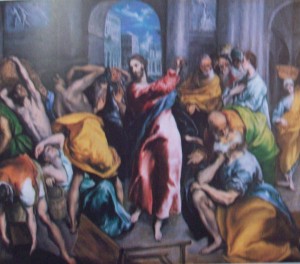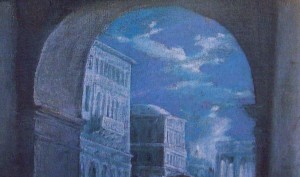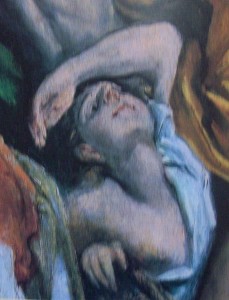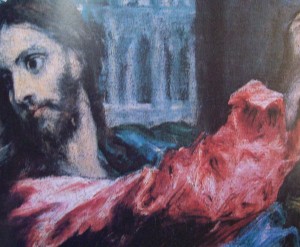Techniques of the famous artists in the world is as revealing as their biographies. Consider this, the reason artists painted landscapes for hundreds of years without moving toward impressionism lies not in the subject matter but in technique. Do you realize that before Van Eyck (some believe to have invented oil paints) artists working in fresco or tempera didn’t have the means at their disposal to achieve dazzling effects of trompe l’oeil (which Van Eyck so skillfully attempted).
It was not until freedom of brushstrokes unleashing powers of expression by Titian that individual strokes of the brush were shown through disturbing the illusion. Rembrandt was the first artist that took sensuous pleasure in oil paints.
“One can take a late Rembrandt portrait by the nose, so thickly are the colors applied!”~Houbraken
For your art information, we are proud to include in the blogs an occasional discussion of famous artist’s techniques. Today we will briefly discuss the art techniques of El Greco. We hope you enjoy and include it in your art information files or bookmark http://www.artcenterinformation.com and become a regular visitor.

Domenikos Theotokopoulas, known as El Greco was born in Crete (1554) where he painted in the style of the Byzantine icon art. Later in life he settled in Toledo, Spain and remained there until his death (1614).
He had few followers and failed to find favor with his patron, Phillip II of Spain. He painted elongated figures with brilliant, unconventional colors and this made him lose the acceptance of many critics at the time.
However, with the development of the modern art movements of the 20th century, there began a wider appreciation of his works.
El Greco’s works are painted on a fine canvas and covered with a warm reddish-brown ground. This was common in the second half of the sixteenth century. He used thick oil with the consistency of honey to temper his pigments, applying it with broken strokes using a course hog’s hair brush.
In his studio, there were a great many clay models that he used for the arrangement of figures in his compositions. It is more than probable that he made preparatory sketches and drawings for all his works, but not many of these were found.

The architectural background made use of perspective. It was probably based on contemporary Italian stage design. The blue pigment must have been azurite, because of the high price of ultramarine blue at the time. (This is a conjecture, it is not absolutely known.)
In spite of his straight-forward technique, El Greco was a slow worker that retouched his paintings many times to improve on his first brush strokes.

He consistently used a method of building up flesh tones with lead white and blueish charcoal black as seen in the head of the boy with the basket. If you will note, the grayish tone is marked.
The face is painted sketchily with a stiff hog’s hair brush. El Greco is known to have used not only a coarse hog’s hair brush but an early form of palette knife as well. The coarse brushes were popularized in Venice at the time because it was unsatisfactory to use a soft brush on the coarse canvas. The knife would have had a wooden handle and a flexible wooden blade.

The sleeve of the robe is an excellent example of El Greco’s technique for painting drapery. The thick, opaque light layer was dabbed on with a stiff bristle brush worked in different directions. A transparent lake was applied. The red lake was tempered with a thick medium and applied using hatching strokes. This was a departure from other artists at the time, because usually when a lake was applied, it was done with a soft brush.
In conclusion, the technique and art style of El Greco did not receive the recognition he deserved until the impressionist artists and other schools of the free thinking modern art movements of the twentieth century began to realize and appreciate the true talent he had.
